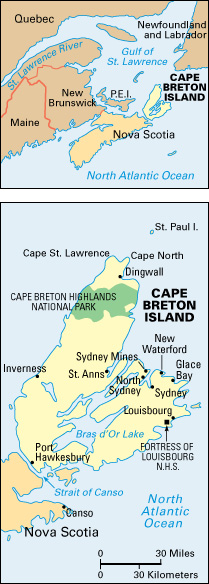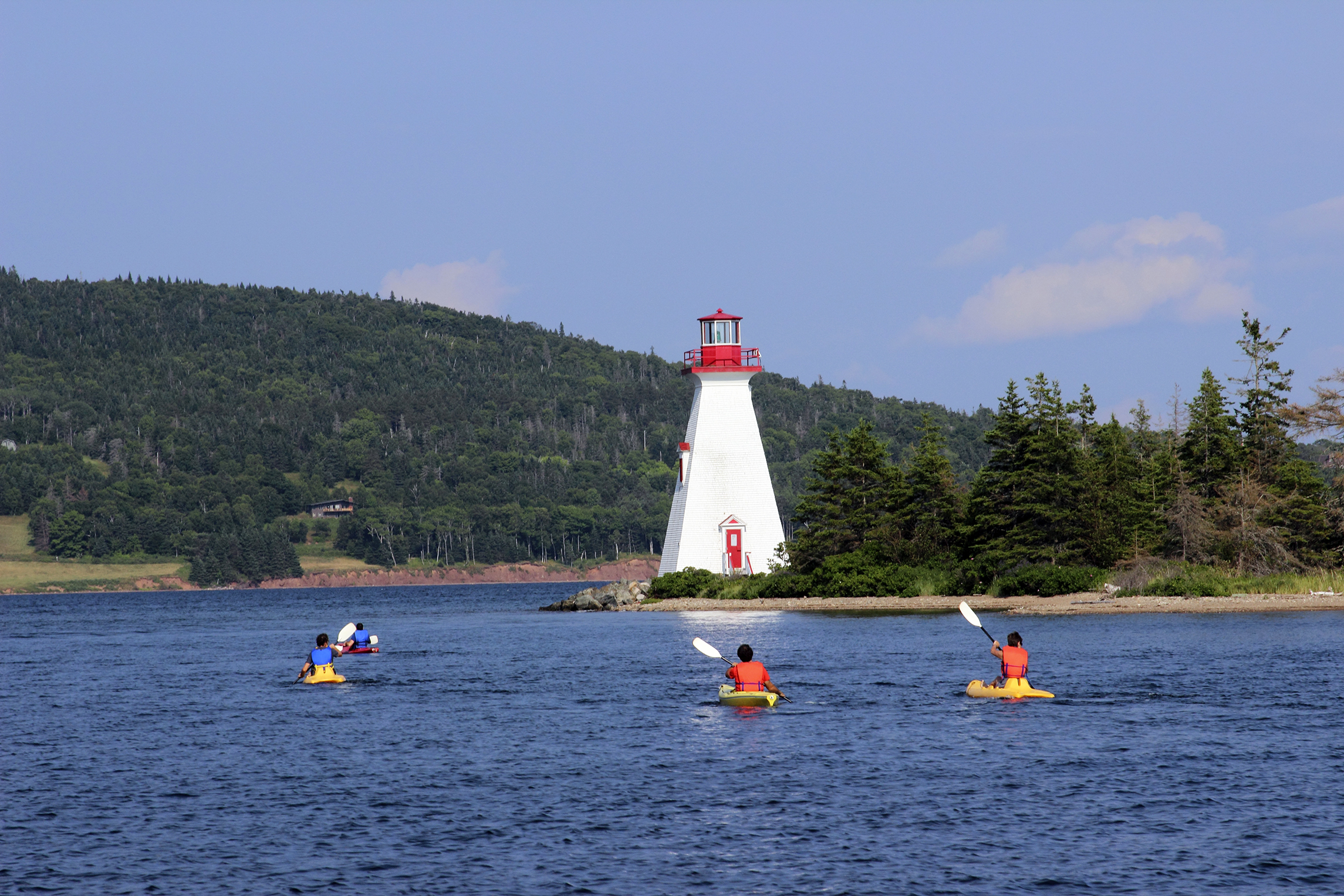Cape Breton << BREHT uhn or BRIHT uhn, >> Island, is a large island off the Atlantic coast of Canada. It forms part of the province of Nova Scotia and covers 3,999 square miles (10,357 square kilometers). A saltwater lake called Bras d’Or Lake occupies about a ninth of the island.

Cape Breton Island has a rugged coastline with many inlets. A highway called the Cabot Trail winds along the northern part of the island, skirting the scenic coastal fringe of Cape Breton Highlands National Park. A stone causeway built in 1955 provides a road and railroad link between Cape Breton and mainland Nova Scotia.
People.
About 75 percent of Cape Breton Island’s 128,000 residents live in the Cape Breton Regional Municipality. The municipality includes the communities of Dominion, Glace Bay, Louisbourg, New Waterford, North Sydney, Sydney, and Sydney Mines, as well as the surrounding rural areas. Much of Cape Breton Island’s population is of Scottish, English, Irish, and French descent. There are also many Native Americans.
Economy.
Rich coal fields beneath Cape Breton Island once made it the center of coal and steel production in the four Atlantic Provinces—New Brunswick, Newfoundland and Labrador, Nova Scotia, and Prince Edward Island. That industry declined sharply just after World War II (1939-1945). Today, health care, fishing, tourism, and agriculture employ many people on the island. Manufacturing has been declining.

History.
Basque fishing crews from Europe visited Cape Breton Island in the early 1500’s. The French took control of the island in the early 1600’s. In 1763, Britain gained control of Cape Breton Island and made it part of its colony of Nova Scotia. The island became a separate British colony in 1784. In 1820, it reunited with Nova Scotia. Thousands of people, most from Scotland, settled on the island between the 1790’s and the 1830’s. The coal and steel industries began to thrive in the early 1900’s. During the 1970’s, many new industries opened in the Sydney area.
See also Louisbourg; Nova Scotia.
